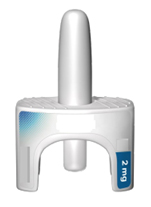
Epinephrine is the first line treatment for severe allergic reaction (anaphylaxis). Anaphylaxis can cause DEATH if left untreated. For decades, the only way to administer epinephrine has been through needle-based products. But there are many limitations of using injectable epinephrine, which are:
- Many patients and caregivers dislike using it due to fear of the needle.
- epinephrine injections are uncomfortable to hold, so some of patients do not carry it with them.
- Inadequate education of patients on how to administer the epinephrine
- Error in using epinephrine injections even after training.
- Injections have a risk of accidental injury to both the patient and caregiver.
As a result of these limitations, a significant proportion of patients at risk of anaphylaxis do not use epinephrine autoinjector or hesitate to administer when necessary, often resulting in increased risk of serious complications and hospitalizations. This emphasizes the importance of removing the obstacle posed by needle injections.
Therefore, several companies are working on needle-free versions of epinephrine. Epinephrine nasal spray 2 mg has recently been developed for children and adults weighing ≥ 30 kg. It is currently undergoing clinical trials. These trials found the epinephrine nasal spray reached similar levels of epinephrine absorption in the body as the auto-injector. They also found the nasal spray was safe and well tolerated, and side effects were mild.
In October 2023, the FDA has asked the company that developed the epinephrine nasal spray to conduct one more study with twice dosing in patients having an allergen-induced allergic rhinitis condition. Although the company already performed this study with a single dose of epinephrine nasal spray. The research showed more rapid absorption compared with normal conditions. The company will conduct this additional study and expects to resubmit it to the FDA in the first half of 2024.
